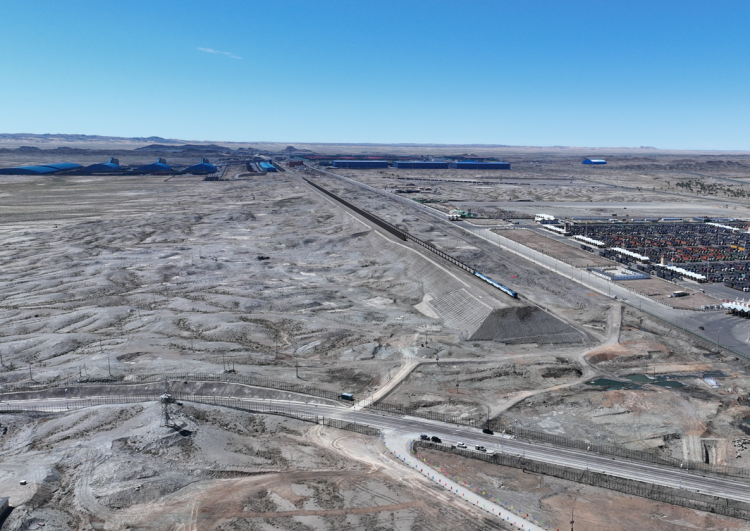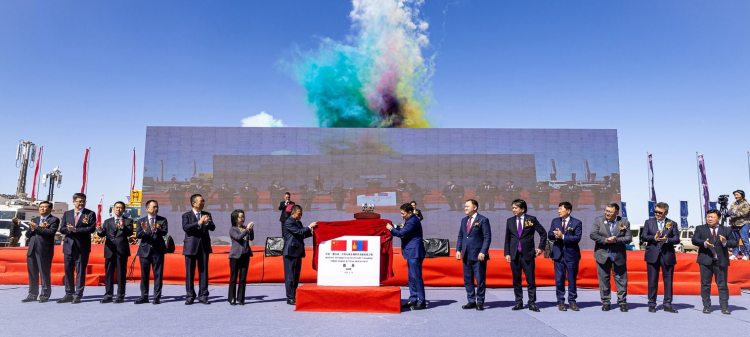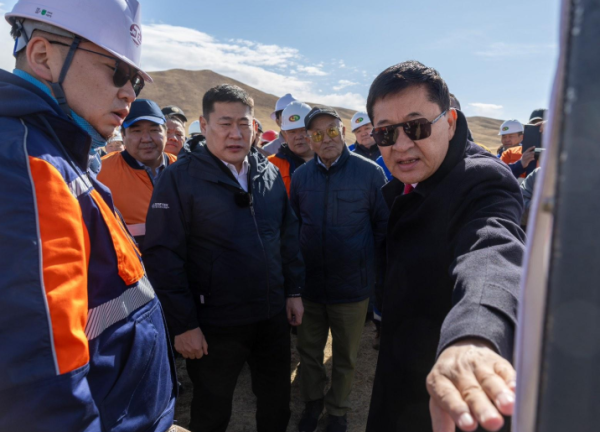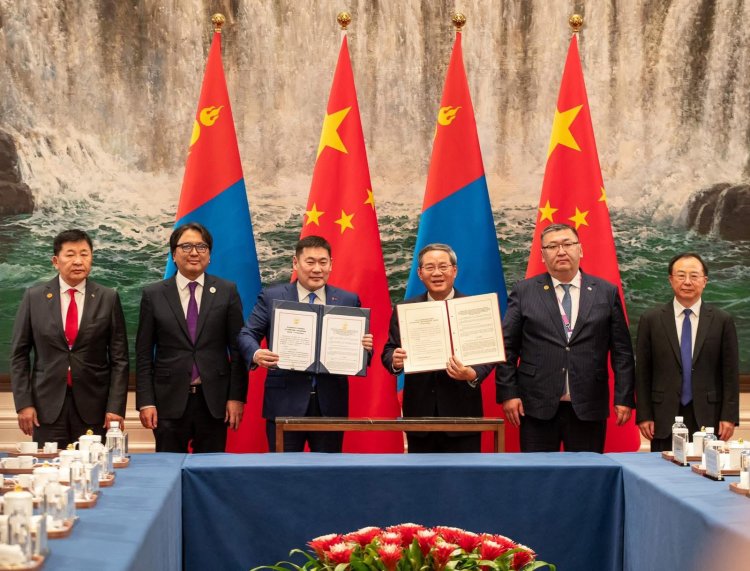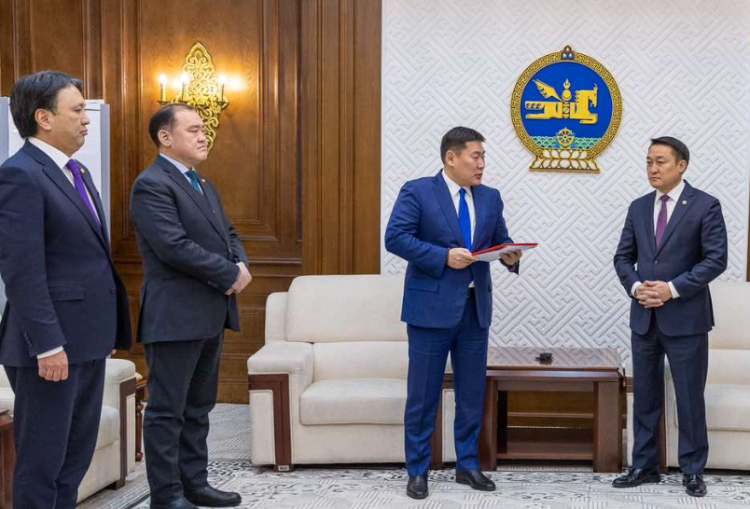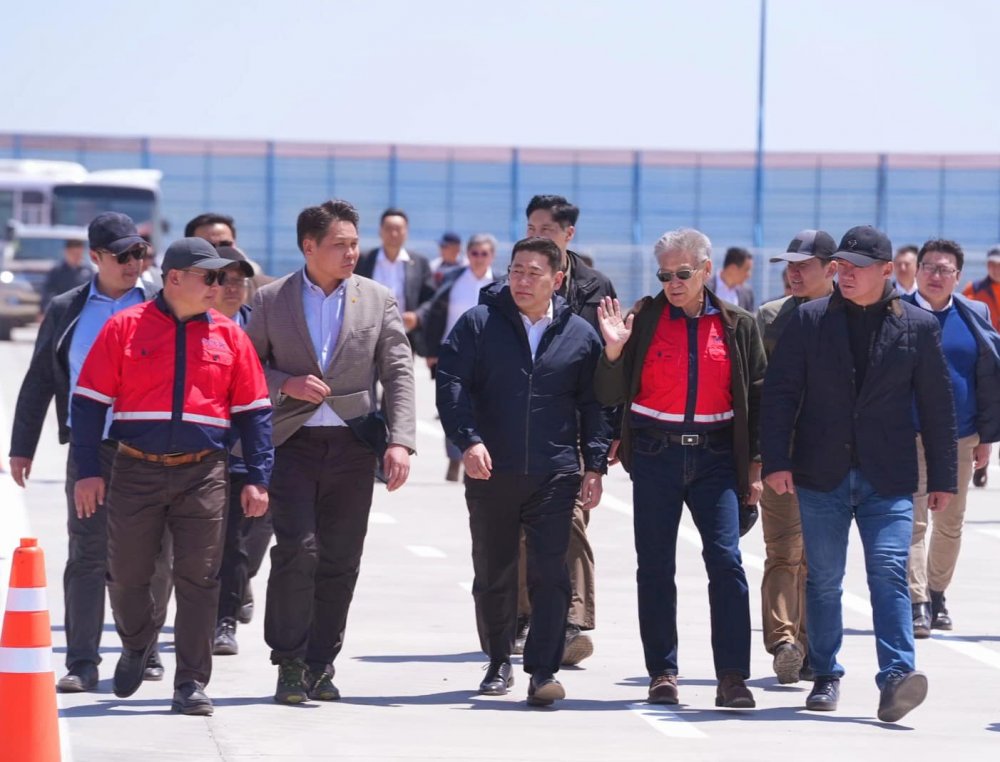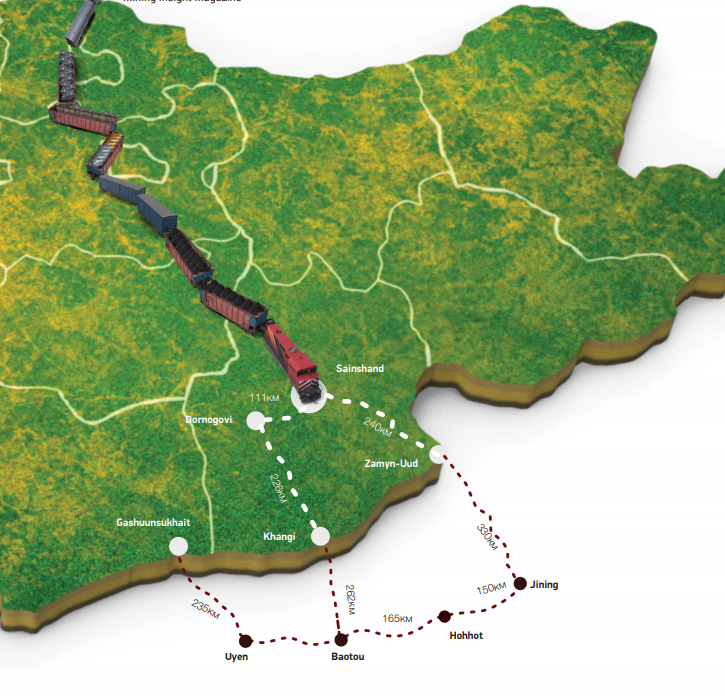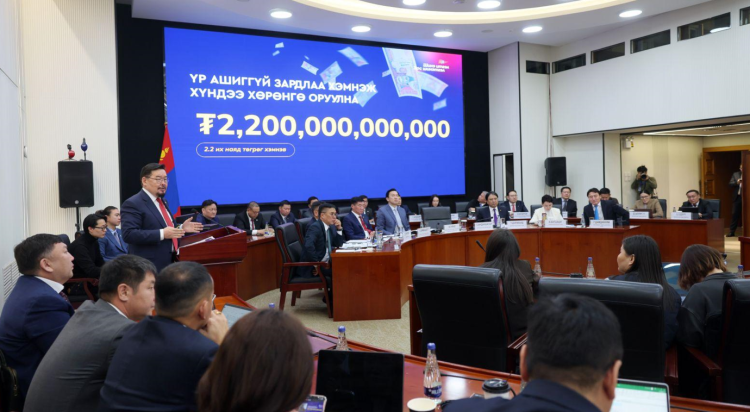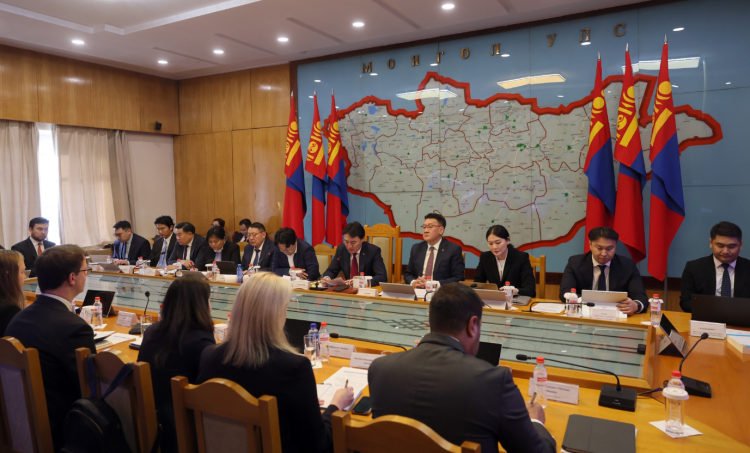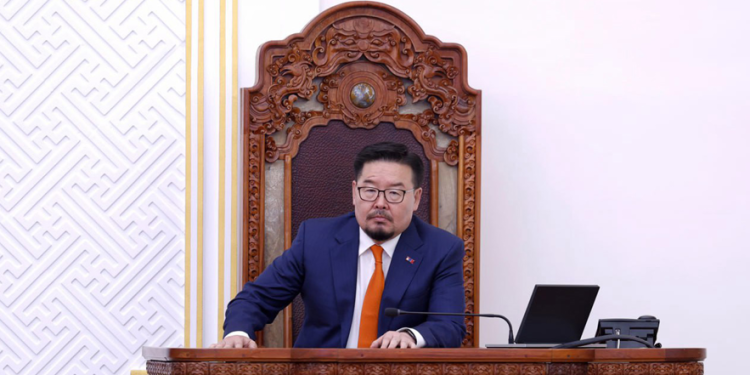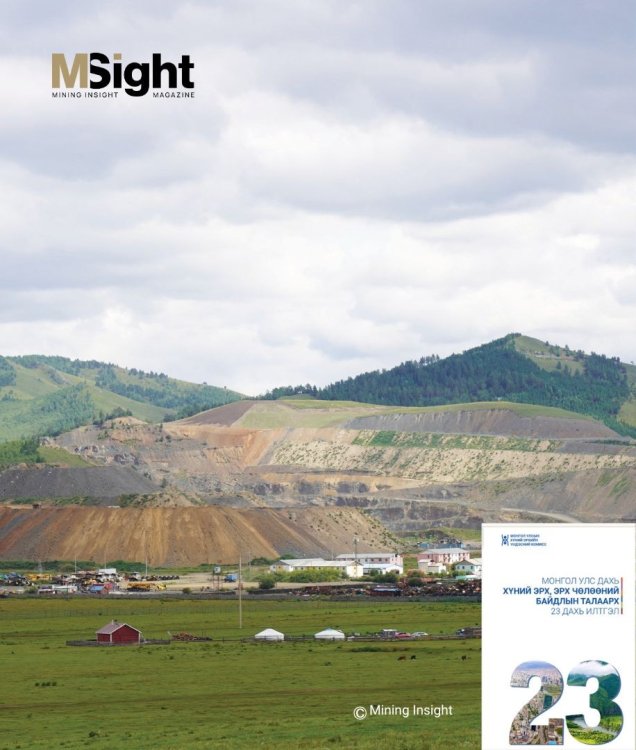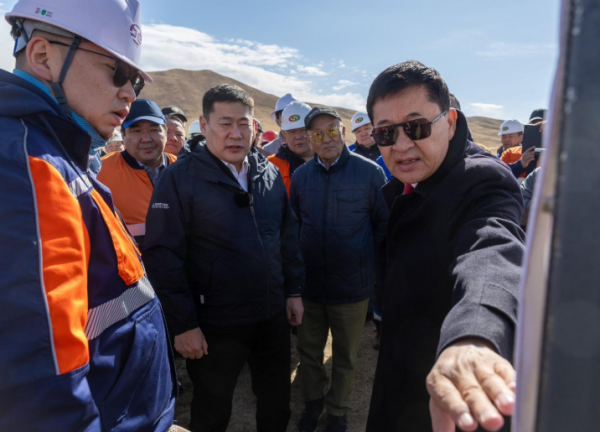 Construction of the 102.5-kilometer Bagakhangai–Khushig Valley branch railway began on April 25 in Khushig Valley. Prime Minister of Mongolia Luvsannamsrain Oyun-Erdene inspected the railway route, marking the formal commencement of construction.
Construction of the 102.5-kilometer Bagakhangai–Khushig Valley branch railway began on April 25 in Khushig Valley. Prime Minister of Mongolia Luvsannamsrain Oyun-Erdene inspected the railway route, marking the formal commencement of construction.
Wishing success to the project implementers, the Prime Minister stated, "Construction activities scheduled for this spring are progressing as planned, and major projects initiated by the Government and the capital city are being launched in phases. One such project is the Bagakhangai–Khushig Valley railway, the construction of which officially begins today.”
In line with the government's declaration of 2025 as the "Year of Supporting Capital Infrastructure," major initiatives are underway to ease road congestion, reduce air pollution, establish satellite cities, and address energy shortages. The construction of this railway is a key component of these efforts.
The railway will span a total length of 102.5 kilometers, feature a 1520 mm gauge, include three stations, four crossings, and a 2.5-kilometer-long bridge structure. It is notable for being the first branch railway ever constructed in Mongolia.
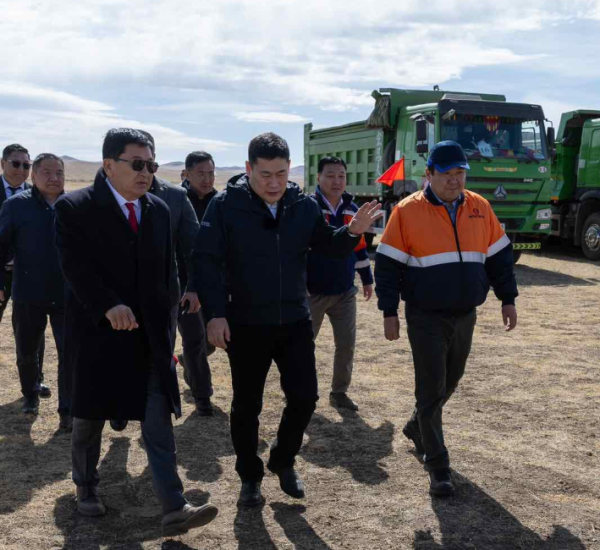 The Mongolian Railway State-Owned Company is responsible for the construction, ensuring adherence to international standards and quality requirements. The company will also oversee the railway’s future operations. Construction is scheduled to be completed and the railway put into operation by October.
The Mongolian Railway State-Owned Company is responsible for the construction, ensuring adherence to international standards and quality requirements. The company will also oversee the railway’s future operations. Construction is scheduled to be completed and the railway put into operation by October.
More than 2,500 engineers and workers from around 110 domestic companies, supported by approximately 1,500 units of equipment and machinery, are engaged in the project.
Funding for the railway is sourced from state-owned, non-mining enterprises under Erchist Mongol LLC, with an anticipated investment recovery period of 15 years.
Once operational, the Bagakhangai–Khushig Valley railway will establish a critical connection between Ulaanbaatar and Khushig Valley, which is envisioned as a future transport and logistics hub. This development is expected to lay the foundation for the development of Hunnu City and the Transport Logistics Center in Khushig Valley.



